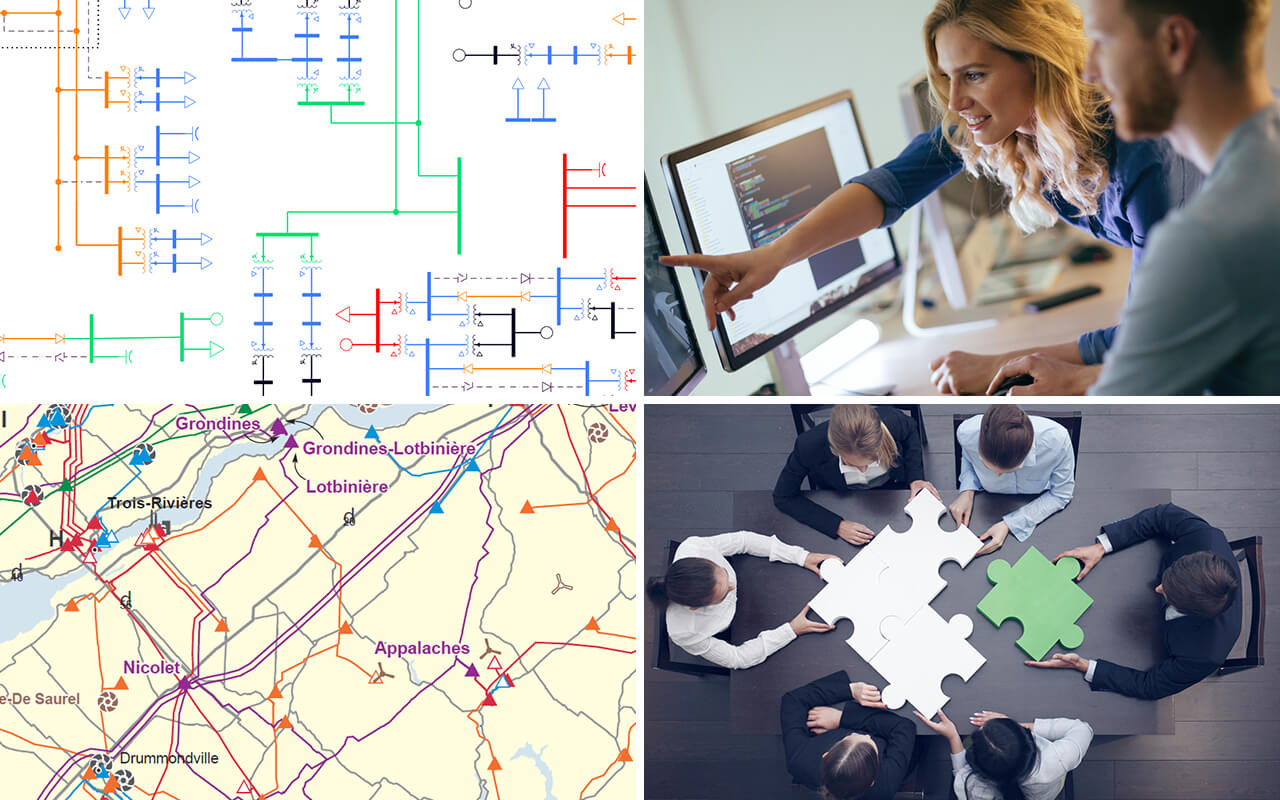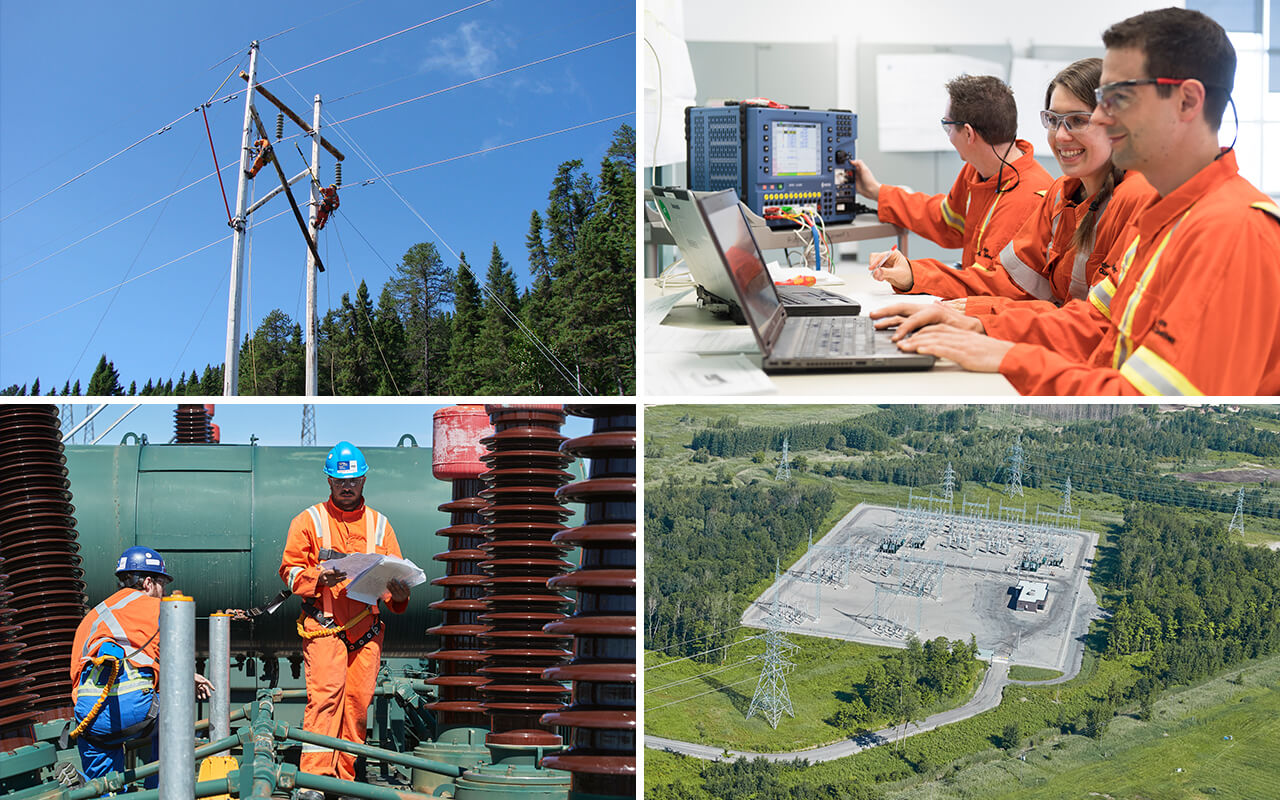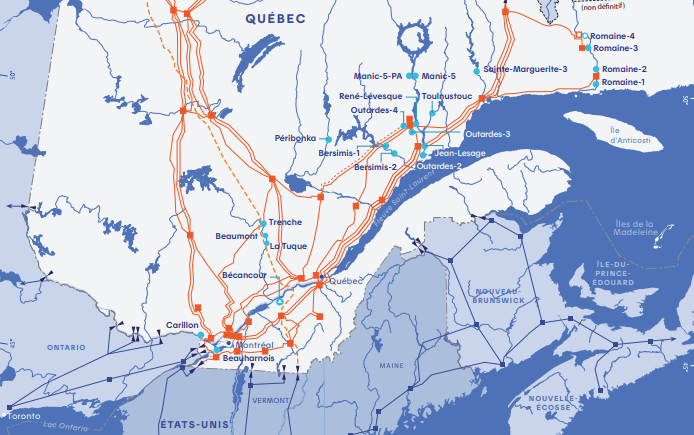We are always on the lookout for ways to best use our existing equipment. Before we consider adding a new substation or power line, we look into expanding an existing substation or increasing line capacity.
Ensuring energy delivery across Québec
We now have the energy consumption (or “load”) forecasts for all of Québec. We’ve also ensured we have the energy blocks needed to meet future demand.
The Transmission Provider must now see to it that the grid has enough power lines and substations to handle all new energy needs throughout the province, even during peak periods.
The equipment that makes up a power grid is highly specialized and, once built, it’s going to be used for a long time. For this reason, the deployment and operation of such equipment must be carefully planned.
Find the best solution to meet new needs
As new energy needs emerge, transmission system planners use proven simulation tools to identify and test the best solution for meeting those needs without having to build new equipment.

Our engineers are internationally renowned for their expertise in power grid simulation. They perform simulations to optimize power and energy flows so as to maintain electricity service stability and reliability in both the grid’s backbone—its 735 kV power lines—and its regional offshoots.
At this stage, the engineers determine:
- The equipment needed to meet any identified power transmission system needs, usually power lines or substation equipment.
- The optimal voltage level to carry the required electricity to its destination, efficiently and sustainably, using the existing grid. In general, the higher the amount of electricity to be transmitted, the higher the line voltage must be.
Once the best solution has been validated, a team analyzes the existing electrical equipment at the targeted location in consideration of its condition and capacity.
Power system planning: our priorities and values
Maintaining our equipment and being mindful of its lifespan

It’s just like with a house or car: without regular maintenance, things can break down—and require urgent, expensive repairs. However, when equipment reaches the end of its useful life, then it’s smarter to accept that it needs replacing instead of insisting on repairing something that’s become obsolete.
Getting the most out of our existing equipment
Taking advantage of scheduled work to upgrade existing equipment
Whenever we plan work, we take the opportunity to bring our existing equipment up to the latest standards, always with a view to improving service reliability.
Power grid reliability standards have evolved and are more stringent than ever. Electricity is more essential than ever, so an outage today has far greater repercussions than the blackouts of fifty years ago.
The 1989 solar storm, the 1998 ice storm, the northeastern U.S. blackout of summer 2003: these major outage events brought together regulatory bodies and power system operators to review equipment design standards and criteria and improve power system reliability.
Complying with standards, regulatory constraints and laws
After 2003’s massive blackout that brought the U.S. Northeast to its knees, the Federal Energy Regulatory Commission (FERC) strengthened reliability standards and made them binding.
Power system reliability standards are drawn up by organizations like the North American Electri Reliability Corporation (NERC), which oversees North America’s major interconnected grids, and the Northeast Power Coordinating Council (NPCC), which oversees the interconnected grids serving New England, New York State, Ontario, New Brunswick, Nova Scotia and Québec.
In Québec, enforcing reliability standards falls to the Régie de l’énergie. Hydro‑Québec must comply with these standards or else face a penalty.
Develop our capacity to import and export power to and from neighboring grids

Not only is our power grid supplied by renewable energy, but we also have massive reservoirs in which we can store water until we need it. These facts translate into additional options that give us more room to manoeuvre for meeting our future energy needs.
Besides actively working to meet Québec’s current electricity needs, Hydro‑Québec has agreements with neighboring operators in the northeastern U.S., Ontario, New Brunswick, Nova Scotia and Newfoundland‑and‑Labrador.
The power transmission system is the basis of these interchanges with neighboring systems, modulated according to the needs of the energy producers.
Energy interchanges present a number of advantages, primarily because hydropower is clean and renewable and because of the storage capacity offered by our reservoirs.
- Hydropower facilities and transmission lines have a very long lifespan. As a result, they can be used for a long time.
- Selling energy on markets outside Québec helps make facilities viable more quickly, benefiting all Quebecers.
- Construction work stimulates the economy, both nationally and regionally.
- These facilities offer us greater flexibility in meeting Québec’s future energy needs in a timely manner, contributing to the success of the energy transition.
- Since the clean hydropower we export often replaces electricity generated from coal, oil or natural gas, it helps our neighbors reduce their greenhouse gas emissions.
Power interchanges with neighboring systems also let us import electricity if we need to, thus further securing our supply and opening the door to worthwhile business opportunities.
For example, we can import surplus energy generated from intermittent sources like the sun and wind. While we are doing so, our generating stations are producing less electricity and water collects in our reservoirs. That water can then be used to produce electricity when conditions are most advantageous.
Build any new equipment that is needed, in keeping with the key principles of sustainable development

Whenever we are required add a new facility (power plant, substation or power line), we follow rigorous processes to achieve the best possible outcome by consulting all stakeholders concerned. We want our activities to benefit everyone.